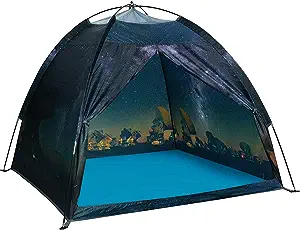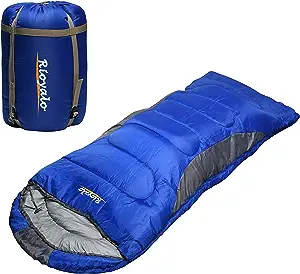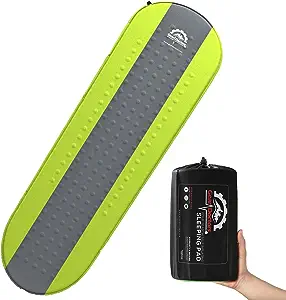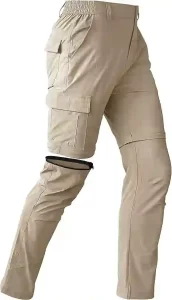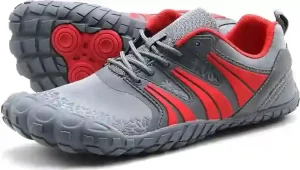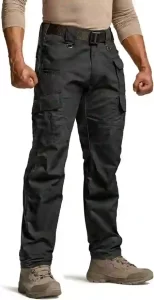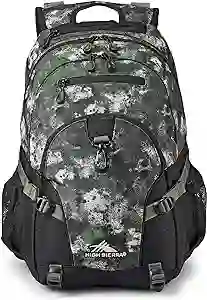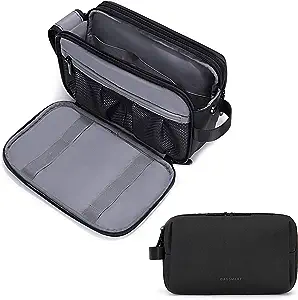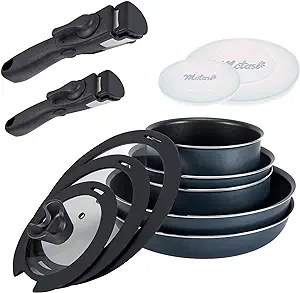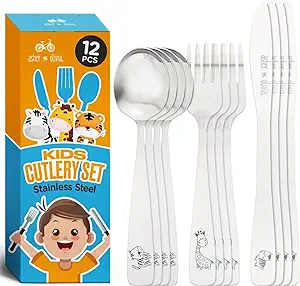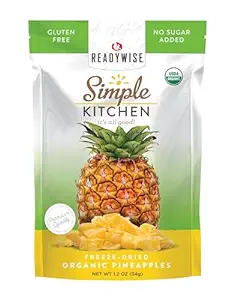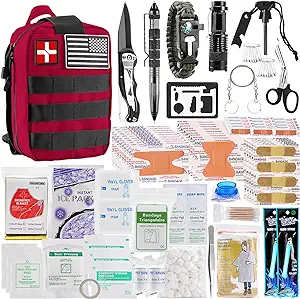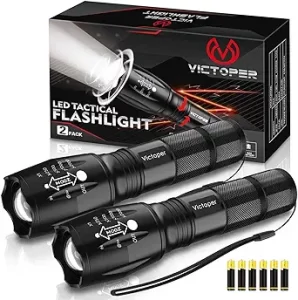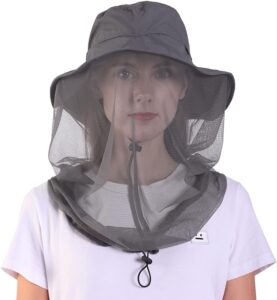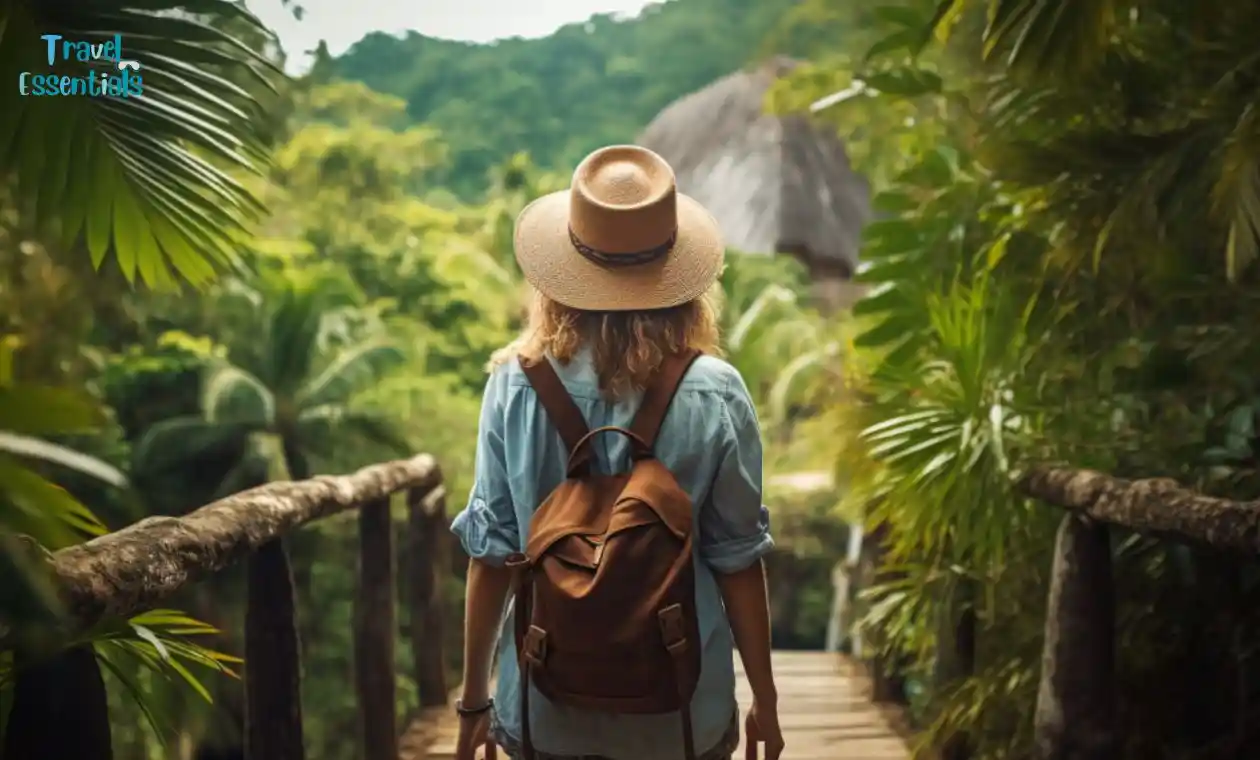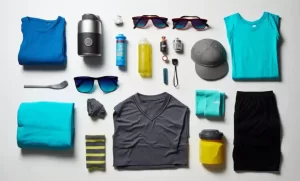
Summer camps evoke a sense of joy and adventure in the hearts of children, promising a season filled with laughter, new friendships, and unforgettable experiences. As kids eagerly anticipate the thrill of outdoor escapades, the foundation for a truly memorable camp adventure lies in well-prepared gear. The essence of a successful and enjoyable camp experience is intricately tied to the essentials that accompany young campers on their journey into the great outdoors.
In the world of summer camps, the phrase “Summer camp essentials” stands as a beacon, signaling the significance of equipping children with the right gear for their adventures. This keyword encapsulates not just the tangible items in a backpack but the essence of preparedness, fostering a sense of independence and confidence in young campers.
From shelter and sleeping gear to clothing, personal items, and safety gear, the term “Summer camp essentials” represents the curated collection that transforms a routine camping trip into an extraordinary, memory-laden adventure.
As parents and guardians prepare their little ones for the upcoming summer escapades, understanding and embracing the importance of these essentials becomes paramount. It is in the careful selection and packing of these items that the magic of summer camps truly begins, ensuring that each child is equipped to embark on a journey of discovery, camaraderie, and pure childhood delight.
Shelter and Sleeping Gear
1. Tents: Explore Kid-Friendly, Easy-to-Assemble Tents
For young campers, the adventure begins with the shelter they call home during their outdoor escapades. Kid-friendly tents add an extra layer of excitement to the camping experience.
Look for tents with vibrant colors, simple designs, and easy-to-assemble features, allowing children to actively participate in setting up their temporary abode. These tents often come with straightforward instructions and color-coded components, turning the tent-pitching process into a fun and educational activity. Ventilation and durability are key considerations to ensure a comfortable and safe shelter for the duration of the camp.
Features:
- Vibrant colors and playful designs to captivate young imaginations.
- Simple and intuitive assembly, encouraging child involvement.
- Adequate ventilation and durability for a secure and comfortable stay.
Considerations:
- Size appropriate for the number of campers sharing the tent.
- Weather-resistant features for unexpected changes in weather.
2. Sleeping Bags: Discuss Options Suitable for Varying Temperatures
A restful night’s sleep is crucial for the success of any camping adventure, and the choice of a suitable sleeping bag plays a pivotal role. Discuss the variety of sleeping bags available, each catering to different temperature ranges. Summer nights may require lightweight and breathable options, while cooler evenings might call for insulated bags. Highlight the importance of choosing a sleeping bag that suits the specific climate of the campsite to ensure campers stay cozy and warm throughout the night.
Options:
- Lightweight sleeping bags for warm summer nights.
- Insulated sleeping bags for cooler evenings.
- Mummy-style bags for added warmth and snugness.
Considerations:
- Size and weight for easy transport, especially for younger campers.
- Zipper features for ventilation and ease of use.
3. Sleeping Pads: Emphasize Comfort for a Good Night’s Sleep
Enhancing the camping experience involves more than just a sleeping bag; comfort is further elevated with the addition of sleeping pads. These pads provide insulation from the ground, adding a layer of cushioning for a more comfortable night’s sleep. Inflatable or foam sleeping pads are popular choices, offering a balance between comfort, portability, and insulation. Emphasize the role of sleeping pads in preventing discomfort from uneven ground and enhancing overall sleep quality.
- Features:
- Inflatable or foam options for varying preferences.
- Lightweight and easy to pack for convenient transport.
- Insulating properties to protect campers from cold ground temperatures.
Considerations:
- Thickness and cushioning suitable for the camper’s comfort.
- Durability for repeated use in outdoor conditions.
Ensuring a cozy and secure night’s sleep, kid-friendly tents, suitable sleeping bags, and comfortable sleeping pads set the stage for a positive camping experience. As young campers settle into their temporary outdoor homes, the combination of these shelter and sleeping gear elements fosters a sense of independence and connection with the natural world, making every camping night a part of a memorable adventure.
Clothing and Footwear
1. Outdoor Clothing: Suggest Lightweight, Breathable Options
Selecting the right outdoor clothing is paramount to ensuring comfort and mobility during camp adventures. For kids engaged in various activities, suggest lightweight and breathable options to prevent overheating. Fabrics like moisture-wicking materials and breathable cotton contribute to temperature regulation. Consider convertible pants that can transform into shorts for versatile wear. Emphasize the importance of layers, allowing campers to adjust to changing temperatures throughout the day.
Options:
- Moisture-wicking T-shirts for efficient sweat management.
- Lightweight and breathable shorts or convertible pants.
- Long-sleeved shirts for added sun protection during daytime activities.
Considerations:
- UV-resistant clothing for sun protection.
- Quick-drying materials for wet conditions.
2. Footwear: Discuss Durable and Comfortable Shoes for Various Activities
Choosing the right footwear is crucial as kids navigate diverse terrains and engage in a multitude of camp activities. Recommend durable and comfortable shoes suitable for hiking, running, and exploring. Closed-toe designs protect against potential hazards on the ground, while breathable materials prevent discomfort. Waterproof options are ideal for dewy mornings or water-based activities, ensuring dry and happy feet throughout the camp experience.
Options:
- Hiking shoes with sturdy soles for trail adventures.
- Athletic sneakers for running and sports activities.
- Sandals with secure straps for water-based activities.
Considerations:
- Proper sizing to accommodate potential swelling during the day.
- Ankle support for uneven terrains.
3. Rain Gear: Highlight the Importance of Staying Dry During Unexpected Showers
In the unpredictable outdoor environment, unexpected showers are not uncommon. Stress the significance of staying dry by incorporating rain gear into the camping wardrobe. Lightweight, packable rain jackets and pants provide effective protection without adding excessive weight to the camper’s backpack. Opt for materials that offer both water resistance and breathability, ensuring campers stay comfortable even in wet conditions.
Options:
- Compact, packable rain jackets for easy storage.
- Water-resistant pants to keep lower body clothing dry.
- Ponchos for quick and comprehensive coverage during sudden rain.
Considerations:
- Ventilation features to prevent overheating.
- Adjustable closures for a secure fit.
By suggesting lightweight, breathable clothing, durable footwear, and effective rain gear, young campers are equipped to face diverse weather conditions with confidence. The combination of these clothing and footwear elements ensures that children remain comfortable, protected, and ready for the wide range of adventures that unfold in the dynamic outdoor setting of a summer camp.
Personal and Hygiene Items
1. Backpacks: Recommend Age-Appropriate Backpacks for Carrying Essentials
A reliable backpack is an essential companion for young campers, providing a convenient and organized way to carry their belongings. Recommend age-appropriate backpacks that are durable, comfortable, and sized to accommodate the essentials without overwhelming the child. Look for features such as adjustable straps, multiple compartments, and padded back panels for ergonomic support. Encourage campers to participate in packing their backpacks, fostering a sense of responsibility and ownership over their gear.
Features:
- Adjustable and padded shoulder straps for comfort.
- Multiple compartments for organized storage.
- Durable materials for outdoor resilience.
Considerations:
- Size appropriate for the camper’s age and physical capabilities.
- Reflective elements for visibility in low-light conditions.
2. Toiletry Kit: Discuss Compact Hygiene Items for Cleanliness
Maintaining personal hygiene is crucial in the outdoor setting, and a well-equipped toiletry kit ensures campers stay clean and refreshed. Discuss compact hygiene items suitable for camping, emphasizing space-saving options. Include essentials like a toothbrush, toothpaste, biodegradable soap, and a quick-dry towel. Compact toiletry kits encourage campers to prioritize cleanliness while minimizing the impact on the environment.
Items:
- Biodegradable soap for eco-friendly hygiene.
- Toothbrush and toothpaste for oral care.
- Quick-dry towel for efficient drying.
Considerations:
- Travel-sized toiletries to save space.
- Waterproof pouches to prevent leaks.
3. Personal Items: Include Items like Water Bottles, Sunscreen, and Insect Repellent
Personal items play a vital role in ensuring the well-being and comfort of young campers during outdoor activities. Include essential items such as water bottles to stay hydrated, sunscreen for sun protection, and insect repellent to ward off unwanted pests. Emphasize the importance of proactive care, encouraging campers to apply sunscreen and insect repellent regularly to enjoy a safe and comfortable camping experience.
Items:
- Water bottles for hydration throughout the day.
- Sunscreen with a high SPF for sun protection.
- Insect repellent to prevent insect bites.
Considerations:
- Reusable water bottles for eco-friendly practices.
- Sunscreen and insect repellent suitable for children’s sensitive skin.
By recommending age-appropriate backpacks, compact toiletry kits, and essential personal items, young campers are equipped with the tools they need to maintain personal hygiene and stay comfortable throughout their outdoor adventures. These items contribute to a sense of independence and responsibility while fostering a positive and enjoyable camping experience.
Camp Cooking and Dining
1. Portable Cookware: Explore Easy-to-Use Cooking Gear for Campfire or Stovetop
Camp cooking is a delightful part of the outdoor experience, and choosing the right portable cookware enhances the culinary adventure for young campers. Explore easy-to-use cooking gear suitable for campfires or portable stovetops. Compact cookware sets, including pots, pans, and utensils, simplify meal preparation. Look for materials that are lightweight, durable, and easy to clean. Discuss the versatility of these sets, allowing campers to enjoy a variety of meals while embracing the joy of cooking in the great outdoors.
Gear:
- Lightweight and durable cookware sets for easy transport.
- Non-stick surfaces for simplified cooking and cleaning.
- Compact designs for space-efficient packing.
Considerations:
- Compatibility with campfire grates or portable stovetops.
- Handles with heat-resistant grips for safety.
2. Kid-Friendly Utensils: Highlight Safe and Practical Eating Tools
Eating at camp becomes an enjoyable experience with the right utensils tailored for young campers. Highlight kid-friendly utensils that are safe, practical, and easy for small hands to use. Opt for utensils made from durable, BPA-free materials, ensuring they withstand the rigors of outdoor use. Discuss the importance of features like rounded edges and ergonomic designs for added safety and comfort during mealtime.
Utensils:
- Child-sized, lightweight cutlery for easy handling.
- BPA-free and durable materials for safety and longevity.
- Ergonomic designs for comfortable use.
Considerations:
- Utensils that can be easily cleaned in camp conditions.
- Inclusion of utensil sets with forks, knives, and spoons.
3. Camp Snacks: Suggest Healthy and Energizing Snack Options
Fueling young campers with healthy and energizing snacks is essential for sustaining their energy throughout the day. Suggest a variety of nutritious and easy-to-pack snacks that cater to different tastes. Trail mix with nuts and dried fruits, granola bars, and fresh fruit are excellent choices. Discuss the importance of balancing tasty treats with nutritional value, ensuring campers have the energy needed for all their outdoor activities.
Snack Options:
- Trail mix with a mix of nuts, seeds, and dried fruits.
- Granola bars for a quick and satisfying snack.
- Fresh fruit options for natural sweetness and hydration.
Considerations:
- Allergen considerations when suggesting snack options.
- Portioning snacks for easy distribution and consumption.
By exploring portable cookware, highlighting kid-friendly utensils, and suggesting healthy snack options, camp cooking, and dining become not only a practical necessity but also an enjoyable part of the camping experience. These elements contribute to the joy of shared meals, fostering a sense of camaraderie and connection among young campers in the heart of the outdoors.
Recreation and Entertainment
1. Outdoor Games: Recommend Games Suitable for Campgrounds
Engaging in outdoor games is a fundamental aspect of the camp experience, fostering teamwork, friendly competition, and physical activity. Recommend a variety of games suitable for campgrounds, considering the available space and terrain. Classics like frisbee, catch, and tag are timeless choices. Additionally, suggest nature-inspired games like scavenger hunts or nature bingo to connect campers with their surroundings. Emphasize the importance of inclusive games that accommodate various ages and abilities.
Game Recommendations:
- Frisbee for active and dynamic play.
- Nature scavenger hunts for educational and entertaining experiences.
- Classic catch or tag for interactive fun.
Considerations:
- Inclusivity to ensure all campers can participate.
- Adaptable games that suit the available outdoor space.
2. Campfire Activities: Discuss Storytelling, Sing-Alongs, and Safe Fire Play
The enchanting glow of a campfire provides the perfect backdrop for a myriad of activities that capture the spirit of camping. Discuss campfire activities such as storytelling, where campers take turns sharing tales, creating a sense of shared storytelling traditions. Sing-alongs with simple, well-known tunes add a musical touch to the evening. Emphasize fire safety and the importance of responsible fire play, including roasting marshmallows for s’mores.
Activities:
- Storytelling sessions for imaginative and entertaining evenings.
- Sing-alongs with campfire songs for a musical atmosphere.
- Safe fire play, including marshmallow roasting for s’mores.
Considerations:
- Supervision to ensure safe fire practices.
- Inclusion of activities that cater to varied interests.
3. Arts and Crafts: Explore Creative Projects to Keep Kids Engaged
Unleashing creativity through arts and crafts adds a dynamic and imaginative element to camp life. Explore a range of creative projects suitable for the outdoor setting. Nature-inspired crafts, such as leaf pressing or rock painting, connect campers with the natural surroundings. Provide a variety of materials for artistic expression, encouraging campers to create personalized mementos of their camping adventure.
Creative Projects:
- Nature-inspired crafts like leaf or flower pressing.
- Rock painting for a personalized touch.
- Craft stations with a variety of materials for artistic freedom.
Considerations:
- Age-appropriate projects with clear instructions.
- Environmentally friendly materials and practices.
Recreation and entertainment at camp go beyond mere pastimes; they create shared memories and strengthen the bonds among young campers. By recommending a diverse range of outdoor games, campfire activities, and arts and crafts projects, the recreational aspect of camping becomes a holistic experience that combines physical activity, creativity, and the joy of shared moments in the great outdoors.
Safety and First Aid
1. First Aid Kit: Emphasize the Importance of a Well-Stocked Kit
Prioritizing safety in the great outdoors begins with a well-stocked first aid kit, an essential companion for any camping adventure. Emphasize the importance of a comprehensive kit that includes bandages, antiseptic wipes, adhesive tape, pain relievers, and any necessary prescription medications. Educate campers on basic first aid procedures and encourage responsible use of the kit. Periodic checks and replenishments ensure that the first aid kit is always ready to address minor injuries promptly.
Kit Contents:
- Bandages, gauze, and adhesive tape for wound care.
- Antiseptic wipes for cleaning cuts and scrapes.
- Pain relievers and necessary prescription medications.
- Tweezers and scissors for removing splinters or cutting tape.
Considerations:
- Personalized items for specific medical needs.
- Basic first-aid instructions are included in the kit.
2. Safety Gear: Discuss Items Like Flashlights, Whistles, and Emergency Contacts
Equipping campers with essential safety gear ensures their preparedness for unexpected situations. Discuss the inclusion of items like flashlights for nighttime visibility, whistles for signaling, and a list of emergency contacts. Flashlights enhance visibility in low-light conditions, while whistles serve as effective communication tools in case of separation or emergencies. Emphasize the importance of communication and having a plan in place for various scenarios.
Safety Gear:
- Compact flashlights with extra batteries for nighttime use.
- Whistles for signaling in emergency situations.
- A list of emergency contacts and essential information.
Considerations:
- Teaching campers basic signaling methods.
- Reinforcing the buddy system for enhanced safety.
3. Sun and Bug Protection: Recommend Hats, Sunglasses, Sunscreen, and Insect Repellent
Protection against the elements is a fundamental aspect of camper safety. Recommend a combination of sun and bug protection measures to shield campers from potential hazards. Hats and sunglasses offer sun protection, while a sunscreen with high SPF guards against harmful UV rays. Additionally, insect repellent provides defense against unwanted pests, ensuring a comfortable and itch-free camping experience.
Protection Measures:
- Wide-brimmed hats and sunglasses for sun protection.
- High SPF sunscreen for comprehensive sunblock.
- Insect repellent to ward off mosquitoes and other insects.
Considerations:
- Reapplication guidelines for sunscreen and insect repellent.
- Lightweight and breathable clothing for added protection.
By emphasizing the importance of a well-stocked first aid kit, discussing safety gear essentials, and recommending sun and bug protection measures, campers are equipped to prioritize their well-being and navigate the outdoors safely. These safety considerations create a foundation of preparedness, enabling campers to confidently engage in the various activities that define the camping experience.
Affordable Options and Discounts
Budget-Friendly Alternatives: Provide Tips on Cost-Effective Gear
Camping adventures can be enjoyed without breaking the bank, and providing campers with budget-friendly alternatives ensures that outdoor experiences remain accessible to a wide audience. Offer practical tips on acquiring cost-effective gear without compromising on quality or safety.
Tips:
- Second-Hand Gear: Explore thrift stores, online marketplaces, or community swap events for gently used camping equipment. Tents, sleeping bags, and cookware can often be found at a fraction of the cost.
- DIY Solutions: Encourage campers to get creative with do-it-yourself solutions for certain items. Homemade fire starters, reusable utensil sets, and improvised gear storage can be economical and environmentally friendly.
- Off-Brand Options: While reputable brands often offer quality products, consider off-brand alternatives that meet safety standards. Many lesser-known brands provide durable gear at more affordable prices.
Considerations:
- Emphasize the importance of safety and quality even when opting for budget-friendly alternatives.
- Advocate for sustainable practices, such as buying used gear to reduce environmental impact.
Tips for Packing and Organization
Efficient Packing Strategies: Offer Advice on Organizing Gear in Backpacks
Efficient packing is essential for a smooth and enjoyable camping experience, especially when dealing with limited space in backpacks. Provide campers with practical strategies to optimize their packing:
Organizational Tips:
- Categorize Items: Divide gear into categories like sleeping, cooking, and clothing. Use separate bags or compartments for each category to streamline retrieval.
- Roll, Don’t Fold: Rolling clothes saves space and minimizes wrinkles. This technique is beneficial for lightweight and quick-drying fabrics commonly used in camping attire.
- Weight Distribution: Place heavier items closer to the center and higher up in the backpack to maintain balance. Distributing weight evenly helps prevent strain on the back.
Considerations:
- Educate campers about the importance of packing based on the frequency of use. Items needed throughout the day should be easily accessible.
Labeling Personal Items: Emphasize the Importance of Labeling Belongings
Labeling personal items may seem like a small detail, but it can make a significant difference in a camping setting. Reinforce the importance of labeling gear, especially in group camping scenarios, to avoid confusion and loss:
Labeling Techniques:
- Permanent Markers: Use waterproof permanent markers to label items like water bottles, cooking utensils, and personal hygiene products.
- Custom Tags: Attach personalized tags or labels to backpacks, sleeping bags, and tents. Include contact information for easy identification.
- Color Coding: Assign specific colors to individuals or groups within the camping party. This visual cue simplifies the identification of personal belongings.
Considerations:
- Remind campers to check labels regularly, especially before leaving a campsite, to avoid leaving items behind.
Leave-No-Trace Principles: Encourage Responsible Camping Practices
Responsible camping includes leaving no trace of one’s presence in natural settings. Educate campers about the principles of Leave No Trace to minimize their environmental impact:
Leave-No-Trace Guidelines:
- Pack It In, Pack It Out: Emphasize the importance of carrying out all waste, including trash and used hygiene products. Leave the campsite as pristine as it was found.
- Stay on Designated Trails: Discourage off-trail exploration to protect fragile ecosystems. Stick to established paths to minimize environmental disruption.
- Minimize Campfire Impact: If campfires are allowed, use established fire rings. Keep fires small, and use only small sticks and twigs gathered from the ground.
Considerations:
- Integrate Leave No Trace principles into the overall camping experience, fostering a culture of environmental stewardship.
By providing advice on efficient packing, emphasizing the importance of labeling personal items, and encouraging Leave-No-Trace principles, campers are equipped to approach their outdoor adventures with organization, mindfulness, and a commitment to responsible camping practices. These practices not only enhance the camping experience but also contribute to the preservation of natural environments for future generations.
Conclusion
In preparing for summer camp adventures, the key to a memorable and stress-free experience lies in well-prepared gear. Ensuring that young campers are equipped with summer camp essentials enhances their comfort, safety, and overall enjoyment. From shelter and sleeping gear to clothing, personal items, and safety considerations, a comprehensive and thoughtful approach to packing sets the stage for countless adventures in the great outdoors.
Serves as a guiding principle throughout the preparation process. It underscores the significance of thoughtful packing, emphasizing the items that contribute to a positive and enriching camp experience. By embedding this keyword strategically in gear recommendations, parents and guardians can access valuable insights into the gear necessary for their children’s adventures.
As parents and guardians gear up for the upcoming summer camp season, the message is clear: invest in the right equipment to unlock the full potential of the camp experience. Equip your young campers with the essentials that cater to their needs, ensuring they are ready for the varied activities, changing weather, and shared moments that define the magic of summer camp.
With well-prepared gear, children can immerse themselves in the wonders of nature, forge lasting friendships, and create cherished memories that will last a lifetime. Here’s to a summer filled with exploration, growth, and the joy of the great outdoors!
